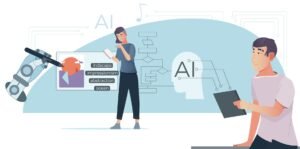Key Points – RAG vs Fine Tuning vs Prompt Engineering
- RAG enhances AI responses by fetching up-to-date or specialized information from external sources, but it may add delays due to the retrieval process.
- Fine Tuning customizes a model for specific tasks by retraining it on targeted data, though it requires significant resources and risks losing general knowledge.
- Prompt Engineering improves outputs by crafting better input questions, offering quick results but limited by the model’s existing knowledge.
- These methods are often combined for optimal results, depending on the task’s needs.
In the world of artificial intelligence, large language models (LLMs) have transformed how we interact with technology, powering everything from chatbots to content creators. However, these models aren’t perfect. Their responses can vary based on the data they were trained on, and they may struggle with up-to-date information or highly specialized tasks. To address these challenges, three powerful techniques have emerged: Retrieval Augmented Generation (RAG), Fine Tuning, and Prompt Engineering. Each method enhances AI performance in unique ways, making them essential tools for optimizing LLMs. This article explains these techniques in simple terms, using analogies, examples, and a comparison table to guide you through their applications.
On This Page
Table of Contents
Imagine searching for yourself on Google to see what the internet knows about you. Years ago, this was a fun way to explore how search engines interpreted your identity. Today, a similar curiosity applies to AI chatbots. When you ask an LLM a question, the response depends on its training data and when it was last updated. For instance, asking “Who is Martin Keen?” might yield different answers depending on whether the model knows Martin Keen from IBM or the founder of Keen Shoes. To improve these responses, we can use RAG, Fine Tuning, or Prompt Engineering. Each method has its strengths and trade-offs, and they’re often combined for the best results. Let’s dive into each one.
What is Retrieval Augmented Generation (RAG)?
Retrieval Augmented Generation (RAG) is like a super-smart librarian who not only finds the most relevant books but also summarizes them to answer your question. It enhances LLMs by fetching external, up-to-date, or domain-specific information and incorporating it into the response.
How RAG Works
RAG operates in three key steps:
- Retrieval: When you ask a question, RAG converts it into a numerical format called vector embeddings, which capture the meaning of your query. It then searches a database of documents (also converted into embeddings) to find those most similar in meaning, even if they don’t share exact keywords. For example, asking “What was our company’s revenue growth last quarter?” might retrieve documents about “quarterly sales” or “financial performance.”
- Augmentation: The retrieved information is added to your original query, creating a richer context for the LLM to work with.
- Generation: The LLM generates a response using this enhanced prompt, combining its pre-trained knowledge with the new data.
Benefits of RAG
- Up-to-Date Information: RAG can access the latest data, making it ideal for dynamic fields like news or finance.
- Domain-Specific Knowledge: It leverages specialized datasets, such as internal company documents or industry reports, to provide tailored responses.
- Reduced Hallucinations: By grounding answers in real data, RAG minimizes incorrect or fabricated responses.
Costs and Considerations
- Performance Latency: The retrieval step adds time, which can slow down responses compared to direct model queries.
- Infrastructure Costs: Storing and searching vector embeddings requires a database and computational resources.
- Data Quality Dependence: The effectiveness of RAG relies on the quality and relevance of the document corpus.
Example
Consider a customer support chatbot for a tech company. Using RAG, the chatbot can retrieve the latest product manuals, FAQs, or internal wikis to answer questions like “How do I reset my device?” This ensures the response reflects the most current information, even if the model’s training data is outdated.
Technical Insight
RAG uses vector embeddings to represent text as lists of numbers that capture semantic meaning. These embeddings are stored in a vector database, and similarity searches (e.g., using cosine similarity) identify the most relevant documents. For example, below is a Python implementation using a library like Haystack :
from haystack import Finder
from haystack.retriever.dense import DensePassageRetriever
from haystack.reader.farm import FARMReader
# Initialize retriever and reader
retriever = DensePassageRetriever(document_store=document_store)
reader = FARMReader(model_name_or_path="deepset/roberta-base-squad2")
finder = Finder(reader, retriever)
# Ask a question
prediction = finder.get_answers(question="What is the capital of France?", top_k_retriever=10, top_k_reader=1)
print(prediction)This code retrieves relevant documents and generates a precise answer, demonstrating RAG’s power in real-time information retrieval.
What is Fine Tuning?
Fine Tuning is like taking a general practitioner and training them to become a heart surgeon. It involves retraining a pre-trained LLM on a specialized dataset to make it an expert in a specific domain or task.
How Fine Tuning Works
- Pre-trained Model: Start with an LLM trained on a broad dataset, giving it general language understanding.
- Specialized Dataset: Collect a dataset tailored to the desired task, such as customer support queries or medical records.
- Training: Adjust the model’s internal parameters (weights) using supervised learning, where the model learns from input-output pairs to minimize errors.
Benefits of Fine Tuning
- Deep Domain Expertise: The model gains specialized knowledge, making it highly effective for specific tasks.
- Fast Inference: Since the knowledge is embedded in the model, responses are generated quickly without external searches.
- Customization: Tailors the model to unique needs, such as a company’s specific terminology or processes.
Downsides of Fine Tuning
- Data Requirements: Needs thousands of high-quality, labeled examples, which can be costly to gather.
- Computational Costs: Training requires significant resources, often involving powerful GPUs.
- Catastrophic Forgetting: The model may lose some general knowledge while specializing, limiting its versatility.
- Maintenance Challenges: Updating the model with new data requires another round of training.
Real-World Example
A healthcare organization might fine-tune an LLM on medical literature and patient records to create an AI that assists doctors with accurate diagnoses. For instance, the model could learn to recognize patterns in medical queries and provide precise treatment recommendations.
Technical Insight
Fine Tuning adjusts the model’s weights through backpropagation, optimizing them for the new dataset. Below is a simplified example using Hugging Face Transformers :
from transformers import AutoModelForSequenceClassification, Trainer, TrainingArguments
# Load pre-trained model
model = AutoModelForSequenceClassification.from_pretrained("bert-base-uncased", num_labels=2)
# Prepare dataset
train_dataset = ... # Specialized dataset
# Set training arguments
training_args = TrainingArguments(
output_dir="./results",
num_train_epochs=3,
per_device_train_batch_size=16,
save_steps=10_000,
save_total_limit=2,
)
# Initialize Trainer
trainer = Trainer(
model=model,
args=training_args,
train_dataset=train_dataset,
)
# Fine-tune the model
trainer.train()This code fine-tunes a model for a specific classification task, illustrating the process of specialization.
What is Prompt Engineering?
Prompt Engineering is like phrasing a question to a friend to get the exact answer you want. It involves crafting clear, specific input prompts to guide the LLM’s responses without modifying the model itself.
How Prompt Engineering Works
- Context Provision: Include background information to set the stage for the response.
- Instruction Clarity: Specify the desired format, tone, or detail level.
- Examples: Provide sample inputs and outputs to guide the model (known as few-shot learning).
- Iterative Refinement: Experiment with different prompts to find the most effective one.
Benefits of Prompt Engineering
- No Infrastructure Changes: Works with the existing model, requiring no additional resources.
- Immediate Results: Prompt changes can be tested quickly, offering instant feedback.
- Flexibility: Easily adapts to new tasks by tweaking the prompt.
Limitations of Prompt Engineering
- Limited to Existing Knowledge: Cannot introduce new information beyond the model’s training data.
- Trial and Error: Finding the best prompt often requires experimentation.
- Model Dependence: Effectiveness varies across different LLMs.
Example
In content creation, a user might prompt an AI with: “Write a 500-word blog post about climate change in a conversational tone, including statistics and expert quotes.” This specific prompt yields a more targeted output than a vague “Tell me about climate change.”
Example Prompts
- Basic Prompt: “Is this code secure?”
- Engineered Prompt: “Review the following Python code for security vulnerabilities, focusing on SQL injection and cross-site scripting, and provide a detailed explanation of any issues found.”
The engineered prompt activates the model’s ability to analyze code methodically, leading to a more thorough response.
Comparing the Three Methods
To choose the right technique, consider their strengths and weaknesses:
| Factor | RAG | Fine Tuning | Prompt Engineering |
|---|---|---|---|
| Knowledge Update | Accesses up-to-date info | Requires retraining | Limited to training data |
| Domain Expertise | Good with relevant corpus | Excellent with specialized data | Depends on model’s training |
| Inference Speed | Slower due to retrieval | Fast | Fast |
| Resource Intensity | Moderate (vector DB, compute) | High (training compute) | Low |
| Flexibility | High (easy to update corpus) | Low (retraining needed) | High (prompts can be changed) |
Combining the Methods
These techniques are not mutually exclusive and are often used together for optimal results. For example, in a legal AI system:
- RAG: Retrieves recent court decisions and case law.
- Prompt Engineering: Ensures outputs follow legal document formats.
- Fine Tuning: Tailors the model to understand firm-specific policies.
This combination creates a system that is accurate, up-to-date, and customized to the firm’s needs.
Another Example
In a customer service application:
- RAG pulls the latest product information.
- Fine Tuning trains the model on customer interaction logs for better tone and accuracy.
- Prompt Engineering guides the model to respond in a friendly, concise manner.
Choosing the Right Method
Selecting the best approach depends on your goals:
- For Up-to-Date Information: RAG is ideal for dynamic data, like news or financial reports.
- For Deep Specialization: Fine Tuning excels in domains requiring expertise, like medicine or law.
- For Quick Adjustments: Prompt Engineering is perfect for tasks needing flexibility without heavy investment.
Conclusion
Optimizing AI models involves balancing the need for current information, specialized knowledge, and ease of use. RAG provides access to external data, Fine Tuning builds deep expertise, and Prompt Engineering offers quick, flexible improvements. By understanding their strengths and combining them when necessary, you can tailor LLMs to meet specific needs effectively.

FAQs
What is Retrieval Augmented Generation (RAG) in simple terms?
Answer: Think of RAG as a super-smart assistant who can quickly check a library of books before answering your question. When you ask something, RAG doesn’t just rely on what the AI already knows. Instead, it searches for the latest or most relevant information from a collection of documents, like company records or recent articles. It then uses that info to give you a better, more accurate answer.
For example, if you ask, “What’s the latest news about electric cars?” RAG can pull fresh articles or reports to include in the response, even if the AI’s original knowledge is a bit old.
How is Fine Tuning different from RAG?
Answer: Fine Tuning is like sending an AI to a specialized training camp to become an expert in one area. Instead of searching for new info like RAG does, Fine Tuning takes an AI model and retrains it with specific data, like medical records or customer service logs, to make it really good at a particular job.
For instance, if you want an AI to help doctors, you’d fine-tune it with medical data so it understands diseases and treatments better. Unlike RAG, which grabs new info on the fly, Fine Tuning builds the knowledge right into the AI.
What does Prompt Engineering mean?
Answer: Prompt Engineering is like asking a question in just the right way to get the best answer from a friend. It’s about writing clear, specific instructions for the AI so it knows exactly what you want. For example, instead of asking, “Tell me about dogs,” you might say, “Write a short story about a brave dog saving its owner, in a fun tone for kids.” This helps the AI focus and give you a better response without needing to change the AI itself.
When should I use RAG?
Answer: Use RAG when you need the AI to give answers based on the latest information or specific documents that it might not already know. It’s great for things like:
— Answering questions about recent events (e.g., “What happened in the last election?”).
— Pulling details from your company’s internal files, like manuals or reports.
— Keeping answers accurate in fast-changing fields like tech or finance.
RAG is like having an AI that can Google things for you, but smarter!
When is Fine Tuning the best choice?
Answer: Fine Tuning is perfect when you need the AI to be a pro at something specific, like understanding legal documents or answering technical support questions. It’s ideal for:
Businesses with unique jargon or processes (e.g., a law firm needing AI to draft contracts).
Tasks requiring deep knowledge, like a medical AI helping with diagnoses.
Situations where speed is key, and you don’t want the AI to search for info every time.
Why would I use Prompt Engineering instead of the other two?
Answer: Prompt Engineering is the go-to when you want quick results without messing with the AI’s setup. It’s like tweaking your question to get a better answer right away. Use it when:
You’re working with a general AI and just need better responses.
You don’t have the time or resources to retrain the AI (Fine Tuning) or set up a database (RAG).
You want to test different ways of asking questions to see what works best.
Are there any downsides to using RAG?
Answer: Yes, RAG has a few challenges:
It can be slower because it needs to search for information before answering.
Setting up and maintaining a database of documents takes effort and money.
If the documents it searches aren’t good or relevant, the answers might not be either.
It’s like asking a librarian to find a book—if the library doesn’t have the right books, you won’t get the best answer.
What are the drawbacks of Fine Tuning?
Answer: Fine Tuning isn’t perfect either:
It needs a lot of specific data, like thousands of examples, which can be hard to collect.
Training the AI again uses a lot of computer power, which can be expensive.
The AI might “forget” some of its general knowledge and become too focused on the new task.
Does Prompt Engineering have any limitations?
Answer: Yep, Prompt Engineering has its limits:
It can only work with what the AI already knows, so it won’t help with brand-new information.
Figuring out the perfect prompt can take a lot of trial and error.
The results depend on the AI model—some models handle prompts better than others.
Can I use RAG, Fine Tuning, and Prompt Engineering together?
Answer: Absolutely! These methods are like tools in a toolbox—you can mix and match them. For example, in a customer service chatbot:
Use RAG to pull the latest product info from manuals.
Use Fine Tuning to make the AI understand your company’s specific terms and tone.
Use Prompt Engineering to ensure the AI responds in a friendly, concise way.
How do I decide which method to use?
Answer: It depends on what you need:
Want the latest info? Go with RAG to fetch fresh or specific data.
Need an expert AI? Choose Fine Tuning for deep knowledge in one area.
Want quick, easy tweaks? Try Prompt Engineering to get better answers fast.
Can you give an example of how these methods work in real life?
Answer: Let’s say you’re building an AI for a travel agency:
RAG: The AI checks recent travel blogs or airline websites to recommend the best vacation spots for 2025.
Fine Tuning: You train the AI on travel itineraries and customer reviews to suggest personalized trip plans.
Prompt Engineering: You ask the AI, “Create a 3-day Paris itinerary for a family with kids, including fun activities and budget tips,” to get a tailored response.
Each method makes the AI more helpful in its own way!








